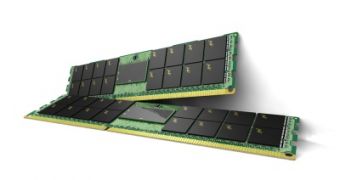Micron Technology, one of the world's leading vendors of NAND Flash-based memory products, has announced today that it has produced the industry's first DDR3 load-reduced, dual-inline memory module (LRDIMM), a product designed for the server market. In addition, the company also said that it would begin sampling 16GB versions of the new module starting this fall, providing professional users with support for increasing memory capacity using LRDIMMs.
“With the rise in virtualization, our new 16GB modules allow customers to easily expand their memory capacity. While traditional RDIMMs limit the amount of memory that can be accommodated due to their loading profile, LRDIMMs eliminate that problem by reducing the module load,” said Robert Feurle, vice president of DRAM marketing at Micron. “And because our LRDIMMs are designed using Micron’s new low-power 2Gb-based 50nm DDR3 chips, which reduces module chip count, we are providing customers with a more cost-effective and efficient means to scale server memory capacity and performance, while also reducing the power levels.”
According to the memory vendor, its new LRDIMMs have been manufactured using the company's 1.35-volt, 2-gigabit (Gb) 50nm DDR3 memory chips, enabling an increase of server module capacity in a cost-effective manner. The company's LRDIMMs use Inphi's isolation memory buffer (iMB) chip that is meant to reduce the bus load when transferring data between the memory and processor. By comparison to current DDR3 RDIMMs, the company's new LRDIMMs can deliver a load reduction of 50 percent in dual-rank module, or 75 percent in quad-rank module.
In addition, Micron claims that server systems can use up to nine quad-rank 16GB LRDIMMs per processor, increasing the memory capacity from 48GB to 144GB, consequently delivering a performance boost of 57 percent.
As far as pricing and availability goes, the company announced that the new LRDIMMs were already sampling in 8GB versions to select enablers, while the mass production of the 16GB LRDIMMs is expected to begin next year.

 14 DAY TRIAL //
14 DAY TRIAL //